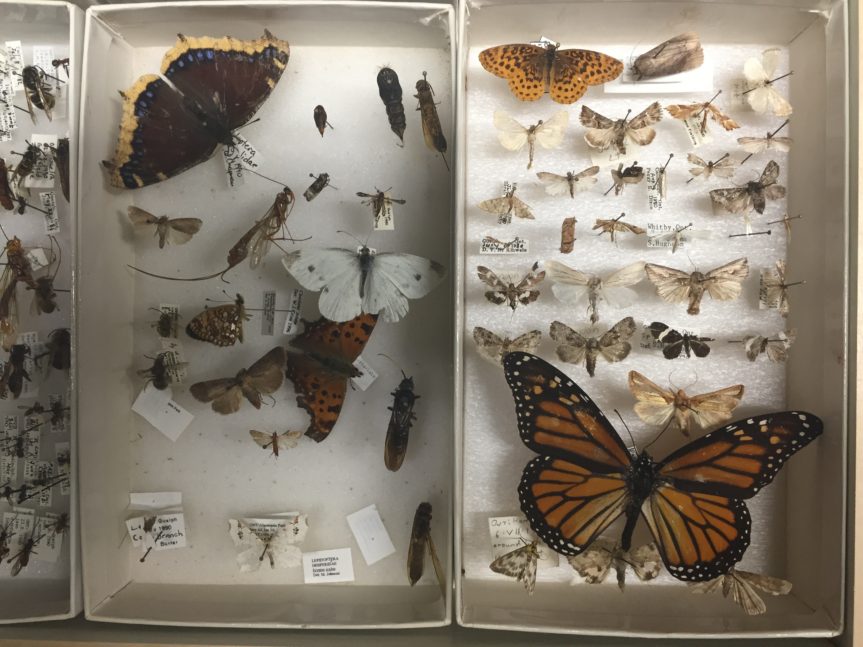Today we visited the insect collection on campus in the Bovey building and were toured around by Morgan (thanks Morgan!). The University of Guelph Insect Collection was established in 1863 (that’s older than Canada as a country!) and contains specimens from that same year. Insects in the collection are from all over the world with an emphasis on insects from southern Ontario.
Below are some photos from our visit and some things we learned about:
We learned that to be classified an insect, a creature generally has to have six legs, an exoskeleton, and two pairs of wings.
While all bee species are in decline, the honeybee is the poster child for bee disappearance. In reality the honeybee is an invasive species in Canada, and while useful to humans (who doesn’t love honey?) isn’t the most concerning for entomologists. The Rusty Patched Bumble Bee is a native species that was found in abundance in Ontario, but hasn’t been seen here since 2009.
We learned about some different classifications of insects, for example that “bugs” have a sucking mouth part, like a bed bug would use to suck blood. Beetles are distinguished by their front set of wings being turned into an armoured shell. Flies are of the order Diptera, meaning “two wings”. They have two sets of wings, but only one set is functional for flying. Butterflies and moths have scaled wings, the coloured areas of their wings actually being scales. The last order of insect we talked about was that of wasps ants and bees (Hymenoptera).
Then we got to see some live bugs, a tailless whip scorpion and some Madagascar hissing cockroaches.
You can find out some more info on the insect collection’s website: http://www.uoguelph.ca/debu/











Leave a Reply to guelphoutdoorschool Cancel reply
You must be logged in to post a comment.